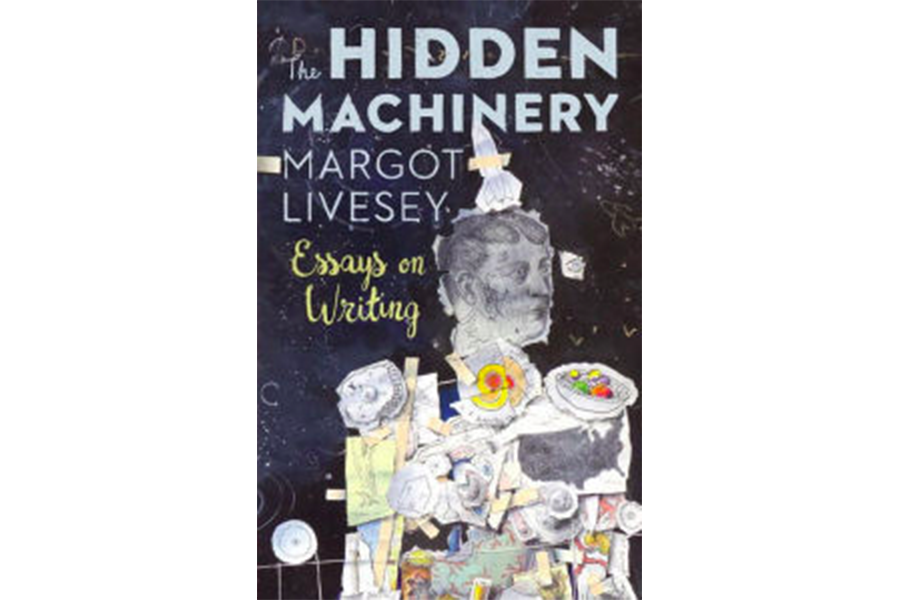'The Hidden Machinery' unveils the magic behind the literature we love.Margot Livesey becomes our guide into the hidden machinery behind great stories.

It almost goes without saying that working writers will benefit from Margot Livesey’s new collection of essays The Hidden Machinery, and for obvious reasons: This is one of our best contemporary writers candidly unlocking for us the tools in her workshop.
But for those of us who are not great writers but instead great readers, this collection also will unveil the magic behind the literature we love. To read this book is to spend time with Livesey – and in doing so, it feels like having a literary magician stop in for a cup of tea.
Here Livesey reveals the techniques of contemporaries like Toni Morrison and her “voice,” Tim O’Brien and his “anti-fiction,” William Trevor’s “mini-scene.” But mostly, and most memorably, it’s the classics that are decoded: We encounter Shakespeare’s “social characterization,” Austen’s “organized” characters, Woolf’s capturing of the “simultaneity of experience,” or T.S. Eliot’s “objective correlative” used in Flaubert.
Livesey is our guide behind the veil, into these artists’ literary devices, or “hidden machinery.”
And Livesey culls her own stories for examples. As her readers will recognize, Livesey’s characters tend to simmer with a quiet but fierce intelligence, and they evolve within the orbit of a shadowy, darker element that puts them to the test. She’s a master of creating suspenseful, subtle foreshadowings out of everyday domestic scenery – what she calls “stuff” – in books like “Homework,” “The Flight of Gemma Hardy,” “The House on Fortune Street,” and her most recent, “Mercury.”
In “Mercury,” for instance, where foreboding descends on the landscape like the weather, one chapter ends with this: “How could any of us have known what would come of their conversation on that warm October afternoon?” And another chapter begins with this: “I blame the snow for what happened next.” Weighted sentences like these are the “hidden machinery,” the building blocks of what Livesey calls the long and short lines of suspense in action.
But Livesey is also funny and gracious about the techniques she feels less accomplished with: Character, for instance. Admitting that while intellectually she understands the tools behind creating characters, Livesey explains that nevertheless, when she’s writing, her inspiration sometimes doesn’t seem to get beyond hair color and eye color.
“Yes, of course our fictions need to be expressive of moral purpose, our characters to be consistently inconsistent,” she writes. “Yet here I am, beginning a new story, and here is Martine with her straight mousy hair and her narrow brown eyes. … When is the rest of her going to show up?”
While all this is gold to practicing writers, “Hidden Machinery” is most glorious when Livesey tackles some our canon’s more inscrutable stylists – James, Woolf, Flaubert. These happen to be writers – especially Woolf – that break her rules. And Livesey, a teacher of fiction at the Iowa Writers Workshop and other places, is able to explain not only how they do so by why it’s OK, even brilliant.
A chapter on “To the Lighthouse” analyzes Woolf’s call for a new kind of fiction, one that echoed the innovations of Impressionist-era painters and their revisioning of “the nature of reality.” Livesey deconstructs the characters of Mrs. and Mr. Ramsay, the chosen setting of their house by the sea, the actions that reveal these characters, and her thoughtful insights illuminate new aspects of the story at every turn. Of Woolf’s writing in the final scene, where the characters and their inner dialogues come together, Livesey beautifully explains: “Just for a moment the chaos of life is averted and everyone is caught in a golden net, merged and complete.”
Livesey is equally eloquent on the techniques used by Austen, inviting us to reconsider the way Austen makes use of her ostensibly limited surroundings to create – through characterizations and situations, through Shakespearian misunderstandings and misidentifications – a world that transcends her time and place.
Austen’s characters, writes Livesey, “travel from a place where the self and others are poorly known – mendacity is mistaken for integrity; attraction for antipathy – to a place where the self is seen and understood.”
If good books allow us to choose the intellectual company we keep, there’s no better company – for a budding writer or an avid reader – than Livesey in these essays. Savor one at a time – but first put the kettle on.
No comments:
Post a Comment